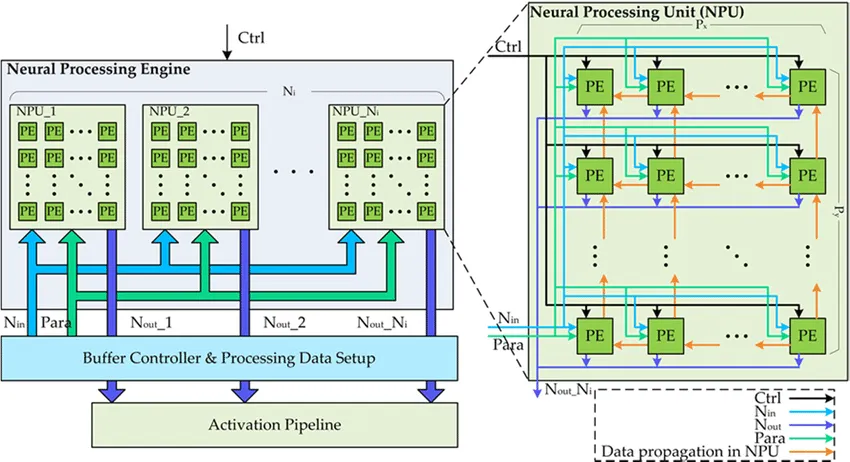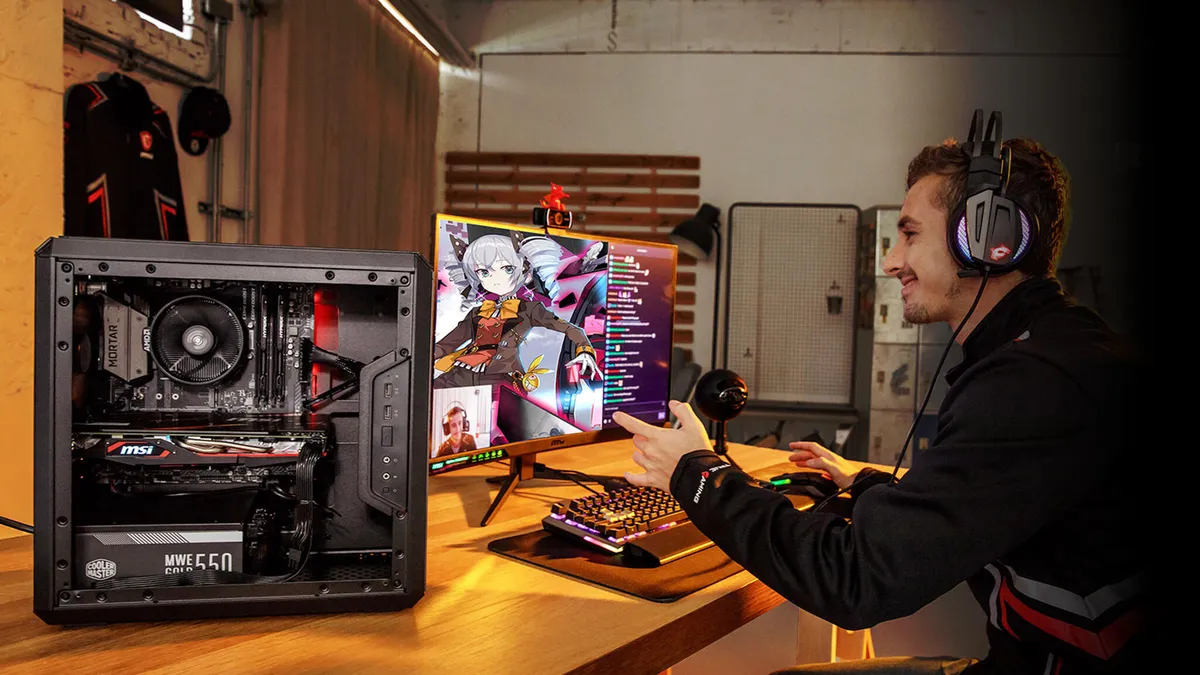Introduction
The gaming industry is constantly pushing the boundaries of graphics, immersion, and artificial intelligence (AI). But what if the AI that powers your favorite titles could also enhance your own gameplay? That’s the promise of AI Neural Processing Units (NPUs), and it’s poised to be a game-changer for enthusiastic gamers.
AI (Artificial Intelligence) is having a major impact on the gaming industry, and a key player in this revolution is the NPU (Neural Processing Unit). NPUs are specialized chips designed to accelerate the processing of complex calculations, which is exactly what AI needs to function effectively in games.
Follow us on Linkedin for everything around Semiconductors & AI
An EXAMPLE:
Gearhead: Evolving Rivals
Concept: Gearhead is a futuristic racing game where your opponents are not just fast, but frighteningly adaptive thanks to AI-powered NPUs. Forget pre-programmed racing lines, these virtual rivals learn from your every move, creating a dynamic and constantly evolving challenge.
Key Features:
Adaptive AI Racers:
- Driving Style Recognition: The AI analyzes your driving habits throughout the race. Do you favor aggressive overtaking or precision cornering? They’ll identify your strengths and weaknesses, adjusting their tactics accordingly.
- Counter-Strategies: If you’re a master of slingshot maneuvers, expect rivals to strategically block your access to boost zones. Love drifting around corners? They might attempt riskier maneuvers to disrupt your flow.
- Learning from Mistakes: Made a bad turn and lost momentum? The AI might exploit that weakness in future races, pressuring you to maintain peak performance.
- Evolving Rival Personalities: Each AI racer has a unique personality that influences their driving style. There’s the aggressive speed demon, the calculated strategist, and the opportunistic wildcard. As you race against them repeatedly, their personalities and tactics can evolve, creating a sense of rivalry and history.
- Dynamic Race Events: Weather patterns and track conditions can change mid-race, forcing both you and the AI to adapt on the fly. Sudden rain showers might make a favorite shortcut treacherous, while AI rivals might adjust their tire setups in real-time to maintain grip.
- Unlockable Strategies: As you progress, you unlock new driving techniques and car modifications that counter specific AI tactics. For example, an EMP blast could disrupt an opponent’s AI calculations, giving you a temporary edge.
- Global Leaderboards: Compete against other players to see who can conquer the ever-evolving AI racers. Leaderboards track not just race times, but also how effectively you countered different AI personalities.
Benefits:
- Unpredictable Challenge: The AI keeps you on your toes, forcing you to constantly adapt your racing style and strategy. No two races are ever the same.
- Emergent Rivalries: Building a history with specific AI racers adds a layer of depth and personalization to the racing experience.
- High Skill Ceiling: Mastering the game requires not just driving skill, but also understanding and anticipating your opponent’s evolving tactics.
- Long-Term Engagement: The constant evolution of the AI racers keeps the gameplay fresh and exciting, encouraging you to keep coming back for more.
Gearhead represents a future of racing games where the AI isn’t just there to be beaten, but to create a dynamic and unforgettable racing experience
Architecture of NPUs

Unlike CPUs, which are general-purpose processors handling various tasks, NPUs are built for one thing: crunching massive amounts of data specific to AI workloads. This specialization translates to a fundamentally different architecture. CPUs excel at sequential processing, handling instructions one after another. NPUs, on the other hand, leverage parallel processing.
It has a large number of processing cores, each specifically designed for tasks like matrix multiplication, a fundamental operation in deep learning. These cores work in parallel, tackling different parts of the same problem simultaneously. In case of a problem statement like multiplying two large matrices – a CPU would handle each element one by one, whereas an NPU could distribute the workload across its numerous cores, significantly accelerating the process.
This focus on parallel processing makes NPUs ideal for the data-hungry nature of AI algorithms.
Read More:A New RISC-V Breakthrough Chip Merges CPU, GPU & AI into One – techovedas
4 Ways AI-Powered NPUs Are Taking Games to the Next Level
The benefits of NPUs extend far beyond just raw processing power. Here’s how they can enhance specific aspects of your gaming experience:
Here’s how AI-powered NPUs are changing gaming:
1. Smarter NPCs: Forget repetitive, predictable characters. AI-powered NPCs can now adapt their behavior, strategize, and react to players in real-time. This creates a more immersive and challenging experience. Imagine enemy combatants in a shooter game that analyze your tactics and adjust theirs accordingly.
2. Dynamic Worlds: Open-world games are becoming even more expansive and lifelike. AI algorithms can generate weather patterns, wildlife behavior, and even populate towns with characters who have their own routines. This creates a sense of a world that exists beyond the player’s immediate actions.
3. Personalized Gameplay: NPUs can power AI that tailors the game experience to each player. Difficulty levels can adjust, storylines can branch based on choices, and recommendations for new games can be made based on your playing style.
4. Evolving Game Development: AI is even being used to assist game developers. AI tools can help create game levels, design characters, and even write storylines. This allows for faster development cycles and potentially more creative content.
Overall, AI-powered NPUs are pushing the boundaries of what’s possible in gaming. We can expect to see even more impressive advancements in the future, with games that feel more alive, responsive, and tailored to the individual player.
Read More: Tesla to Unveil Robotaxi in August 2024: Your Next Ride Won’t Have a Driver – techovedas
NPUs For Deep Learning Workflows
Traditional CPUs struggle with the sheer volume of calculations required for training and inference. This is where the specialized architecture of NPUs shines.
Matrix multiplication is a fundamental operation in deep learning. NPUs are equipped with specialized hardware units specifically designed for performing these calculations at lightning speed. This significantly reduces the time it takes to train and run deep learning models.
CPUs rely on a set of general-purpose instructions. NPUs, however, have their own instruction sets specifically tailored for deep learning algorithms. These instructions are designed to efficiently utilize the NPU’s hardware architecture, further accelerating the processing of deep learning tasks.
NPUs have dedicated on-chip memory. This allows for faster data access compared to traditional CPU caches, minimizing data transfer times and streamlining the overall deep learning workflow.
Read More: 5 High Growth Stocks From the World of Semiconductors – techovedas
Conclusion
The world of gaming is on the cusp of a revolution. With the integration of NPUs, we’re not just looking at smoother frame rates or prettier graphics; we’re entering an era of intelligent and immersive experiences. So, get ready to level up your skills and prepare to be amazed by the intelligent worlds that await. Buckle up, gamers, the future of play is here.




